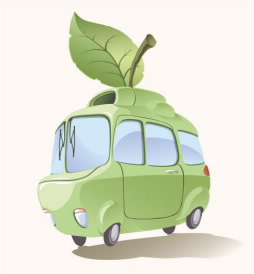EMBARGOED FOR RELEASE | March 27, 2011
“Green” cars could be made from pineapples and bananas
Note to journalists: Please report that this research was presented at a meeting of the American Chemical Society
ANAHEIM, March 27, 2011 — Your next new car hopefully won’t be a lemon. But it could be a pineapple or a banana. That’s because scientists in Brazil have developed a more effective way to use fibers from these and other plants in a new generation of automotive plastics that are stronger, lighter, and more eco-friendly than plastics now in use. They described the work, which could lead to stronger, lighter, and more sustainable materials for cars and other products, here today at the 241st National Meeting & Exposition of the American Chemical Society (ACS).
Study leader Alcides Leão, Ph.D., said the fibers used to reinforce the new plastics may come from delicate fruits like bananas and pineapples, but they are super strong. Some of these so-called nano-cellulose fibers are almost as stiff as Kevlar, the renowned super-strong material used in armor and bulletproof vests. Unlike Kevlar and other traditional plastics, which are made from petroleum or natural gas, nano-cellulose fibers are completely renewable.
Media Contact
During the meeting, March 27-31, the contacts can be reached at:
714-765-2012
Michael Bernstein
202-872-6042
m_bernstein@acs.org
Michael Woods
202-872-6293
m_woods@acs.org
“The properties of these plastics are incredible,” Leão said, “They are light, but very strong — 30 per cent lighter and 3-to-4 times stronger. We believe that a lot of car parts, including dashboards, bumpers, side panels, will be made of nano-sized fruit fibers in the future. For one thing, they will help reduce the weight of cars and that will improve fuel economy.”
Besides weight reduction, nano-cellulose reinforced plastics have mechanical advantages over conventional automotive plastics, Leão added. These include greater resistance to damage from heat, spilled gasoline, water, and oxygen. With automobile manufacturers already testing nano-cellulose-reinforced plastics, with promising results, he predicted they would be used within two years.
Cellulose is the main material that makes up the wood in trees and other parts of plants. Its ordinary-size fibers have been used for centuries to make paper, extracted from wood that is ground up and processed. In more recent years, scientists have discovered that intensive processing of wood releases ultra-small, or “nano” cellulose fibers, so tiny that 50,000 could fit inside across the width of a single strand of human hair. Like fibers made from glass, carbon, and other materials, nano-cellulose fibers can be added to raw material used to make plastics, producing reinforced plastics that are stronger and more durable.
Leão said that pineapple leaves and stems, rather than wood, may be the most promising source for nano-cellulose. He is with Sao Paulo State University in Sao Paulo, Brazil. Another is curaua, a plant related to pineapple that is cultivated in South America. Other good sources include bananas; coir fibers found in coconut shells; typha, or “cattails;” sisal fibers produced from the agave plant; and fique, another plant related to pineapples.
To prepare the nano-fibers, the scientists insert the leaves and stems of pineapples or other plants into a device similar to a pressure cooker. They then add certain chemicals to the plants and heat the mixture over several cycles, producing a fine material that resembles talcum powder. The process is costly, but it takes just one pound of nano-cellulose to produce 100 pounds of super-strong, lightweight plastic, the scientists said.
“So far, we’re focusing on replacing automotive plastics,” said Leão. “But in the future, we may be able to replace steel and aluminum automotive parts using these plant-based nanocellulose materials.”
Similar plastics also show promise for future use in medical applications, such as replacement materials for artificial heart valves, artificial ligaments, and hip joints, Leão and colleagues said.
The scientists acknowledge funding from the government of Brazil, Pematec, Toro Industria and Comercio Ltd., and other private companies.
###

of nano-sized fibers produced from pineapples,
bananas, and other fruits.


